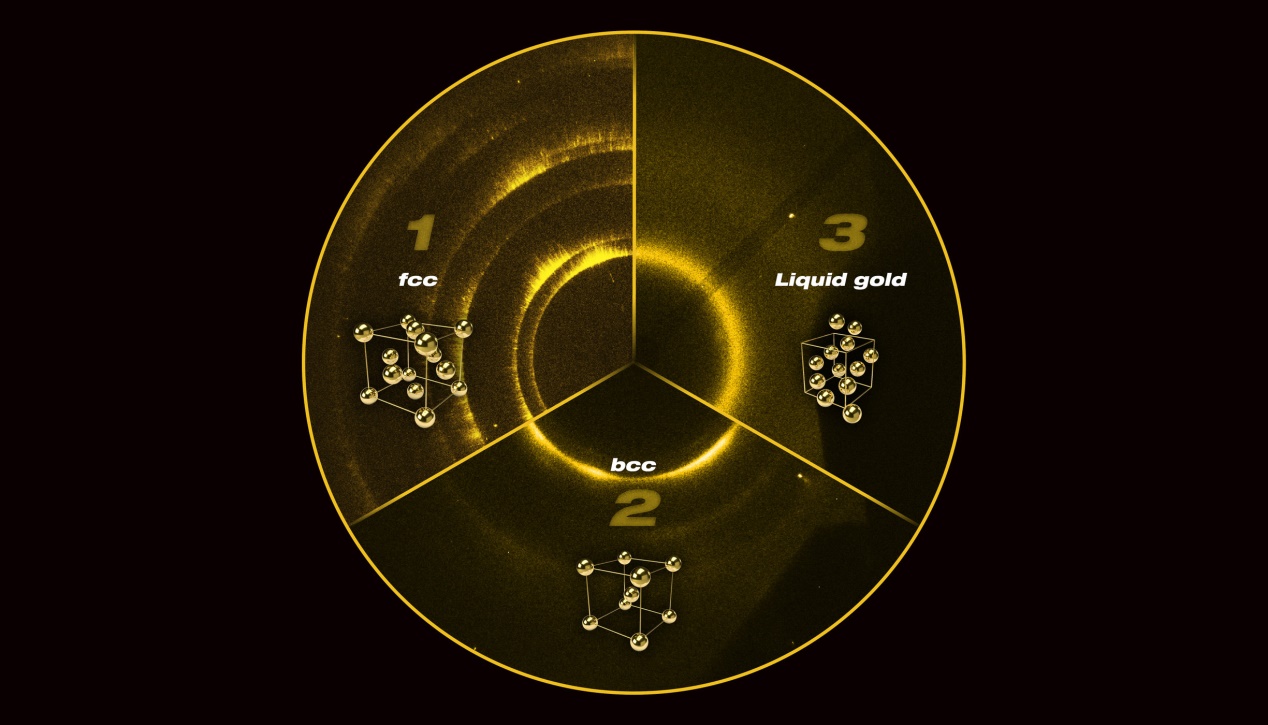
Completely new form of Gold created
Using a high-energy laser, researchers heated gold to extreme temperatures and compressed it to pressures as high as those found at the center of the Earth.
Gold usually forms a crystalline structure that materials scientists call face-centered cubic (fcc) . Imagine a cube like a die. Atoms would sit on each corner and each face.
Most experiments conducted on gold have involved compressing it slowly and at room temperature.
Because it so loyally forms this face-centered cubic structure, Gold has been used as a kind of "standard" in high-pressure experiments to calculate pressure.
But when Gold is rapidly compressed at high temperatures, it formed what's called the body-centered cubic structure (bcc). This more-open structure packs atoms into a space in a less-efficient way, which means the Gold doesn't prefer to be in this form, it would be as if atoms sat on each corner, with just one atom in the middle.
The finding that Gold can form this new structure may change the way scientists use the element as a standard in high-pressure experiments.
Researchers found that the structure of Gold began to change from fcc to bcc at around 220 (GPa), which is 2.2 million times our planet's atmospheric pressure, the researchers said in a statement. What's more, when the researchers compressed the Gold beyond 250 (GPa) to pressures equivalent to that found at the center of the Earth (around 330 GPa), it melted
 English
English Arabic
Arabic


